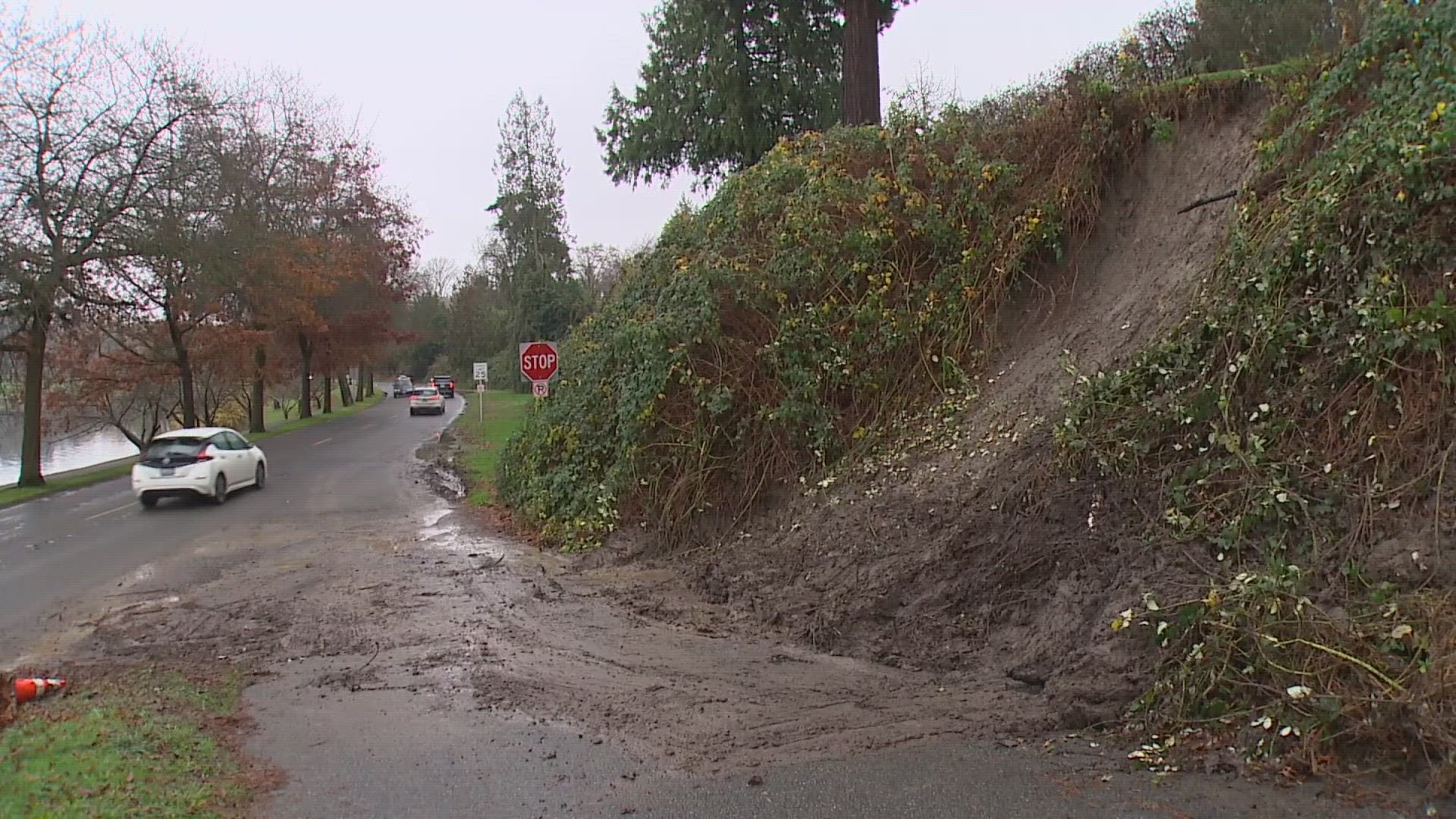SEATTLE — Despite lessening rain in the coming days, the National Weather Service has sent out a statement telling certain areas in Western Washington to still be prepared for landslides with this latest storm.
The statement continued to say: 'This amount of rain will put extra pressure on soil instability, leading to an increased threat of landslides.'
"This is definitely a time when we are on high alert for landslides and it's because of our rainfall data that we've accumulated," said Scott Pawling who is a senior geotechnical engineer with Seattle Public Utilities.
Pawling said SPU tracks neighborhoods across Seattle for landslides like one in Seattle's Mount Baker neighborhood off Lake Washington Boulevard.
"We plot the accumulated rainfall over a three-week period and through this relationship, we're able to predict when we're at the highest risk of landslides and that occurred Monday when we went past that threshold," said Pawling.
Some landslides have already occurred in Western Washington.
"With that amount of rain in a short period of time is the type of situation where we get them. We got a few," said Brent Bower who is a senior service hydrologist for the National Weather Service.
The weather service can get information from soil and rain sensors around Seattle. Even with these tools, Bower said landslides are hard to predict, “We can’t tell you exactly when it’s going to happen or exactly where because the science just isn’t there.”
Landslides have caused major damage in the region. Last year, a home in Magnolia was knocked off its foundation in a landslide. In 2021, mud and debris fell into the sound on Whidbey Island, narrowly missing several homes. In 2013, a mudslide in Everett knocked seven train cars off its tracks.
The risk of a landslide can continue to stay high for days after a storm passes.
"Even after the rain stops, we’re still going to be at a high risk of landslides through the weekend we’re predicting,” said Pawling.
Amtrak also announced Tuesday that its Cascades Train will stop on its way to Portland and transfer passengers to a bus after a landslide buried BNSF tracks.

